Innovatively Leading Value Creation - Focusing on New Retail Electronic Shelf Label System Technology and Application
Recently, the latest article by ZKONG, "Design and Economic Value Analysis of New Retail Electronic Shelf Label System," has been published in the journal "Information Technology and Standardization," which has drawn widespread attention and discussion from the industry on the role of new retail electronic shelf label system in promoting technological innovation and development in new retail.
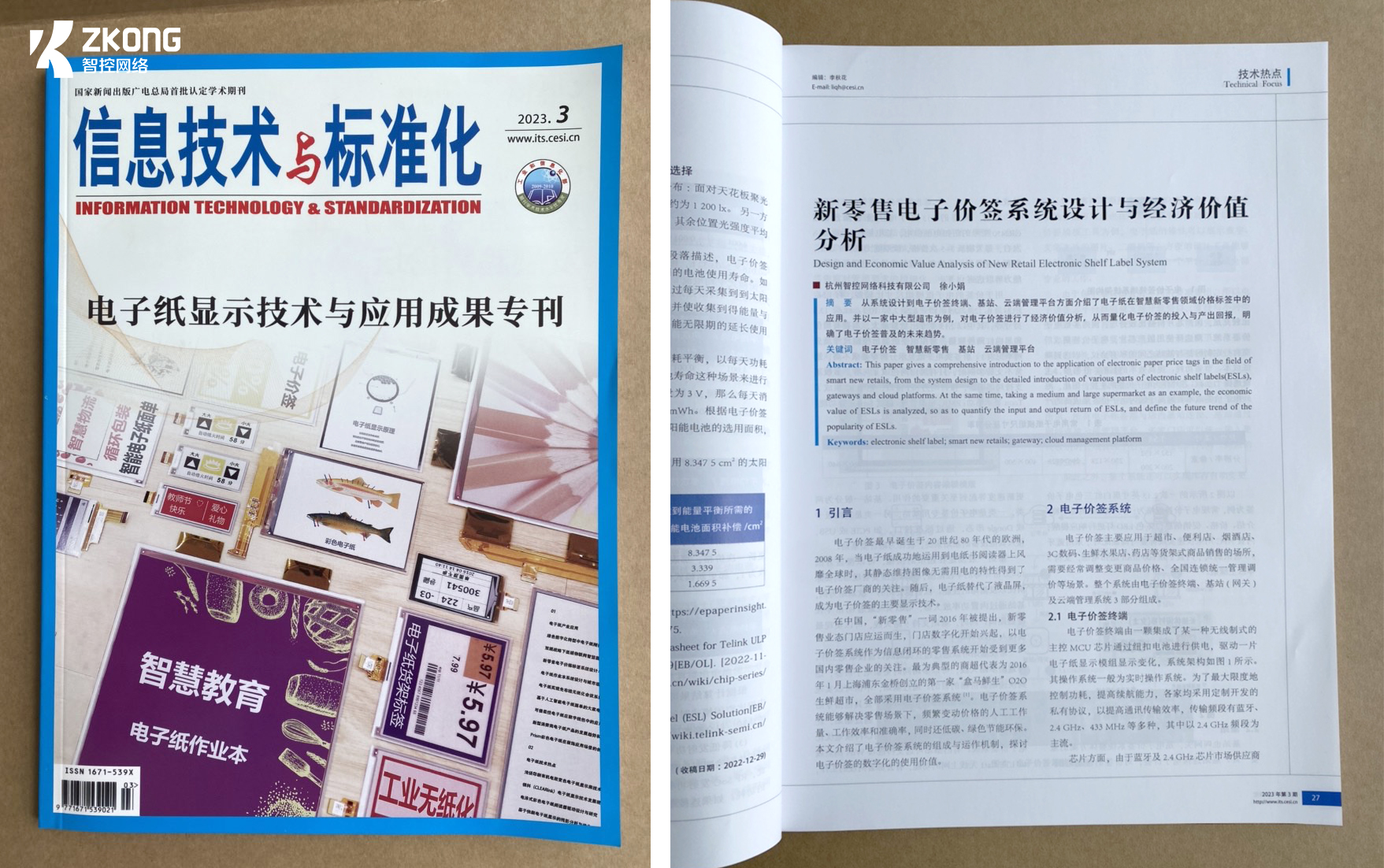
Information Technology and Standardization
Founded in 1959, it is supervised by the Ministry of Information Industry of the People's Republic of China and sponsored by the China Electronics Standardization Institute. It is a comprehensive technical publication focusing on industry, market, and information construction, combining basic, practical, and pioneering aspects.
New Retail Electronic Shelf Label System Technology and Application
The new retail electronic shelf label system is an intelligent and digital commercial display and information dissemination method in the new retail model. In the latest issue of the E-paper Display Technology and Application Achievements Special Issue, ZKONG introduces the application of e-paper in the field of smart new retail price tags from system design to electronic shelf label terminals, base stations, and cloud management platforms, and takes a medium-to-large supermarket as an example to analyze the economic value of electronic price tags. The quantification of input and output returns of electronic price tags has clarified the future trend of electronic price tag popularization.
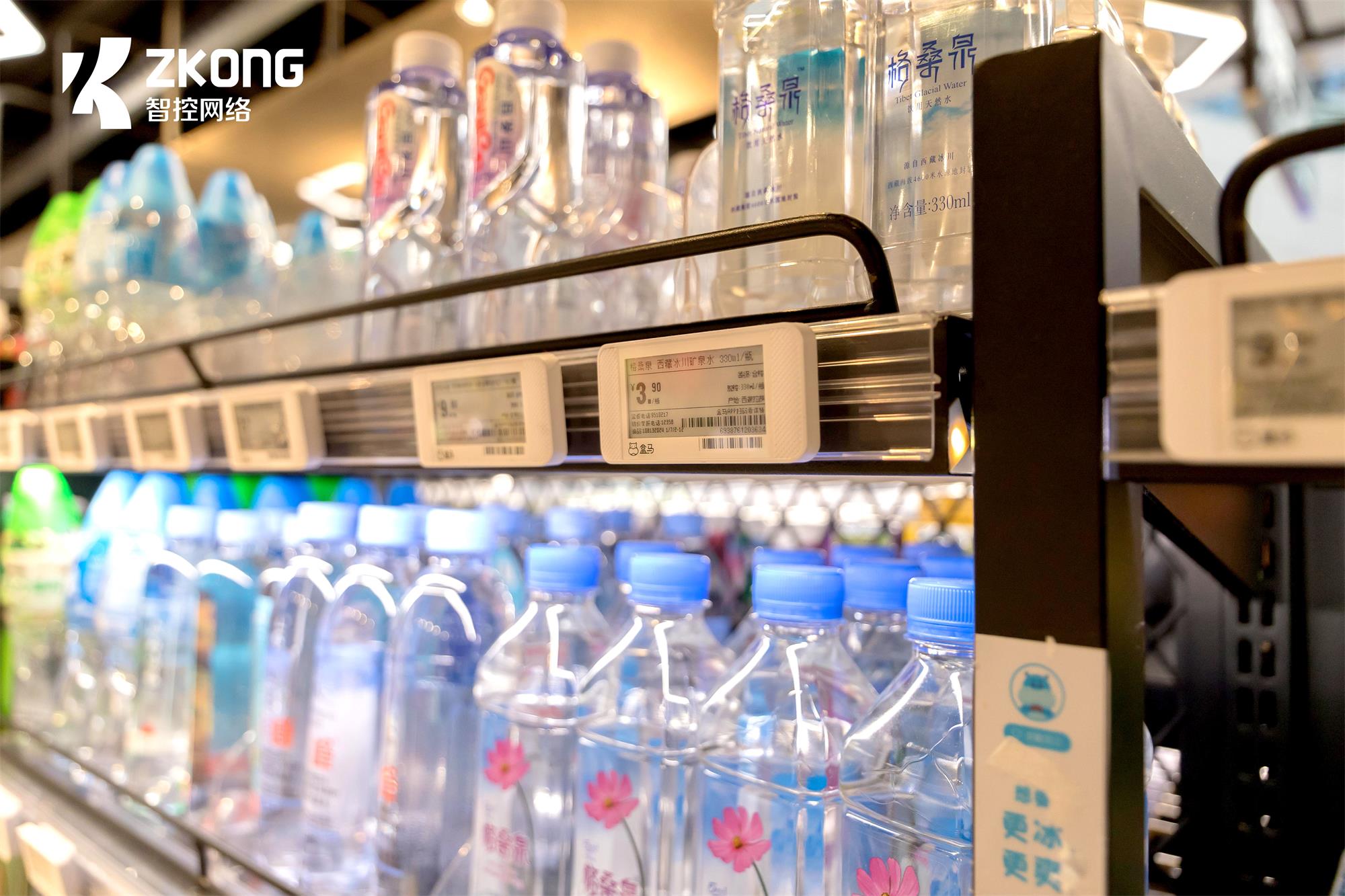
In China, the term "new retail" was proposed in 2016, and new retail stores emerged, with store digitization beginning to rise. Retail systems with electronic price tag systems as information closed loops began to receive more attention from domestic retail companies. The most typical example is the first "FRESHIPPO" O2O fresh supermarket founded in January 2016 in Pudong, Shanghai, which uses a full electronic price tag system. The electronic shelf label system can solve the workload, work efficiency, and accuracy of frequent price changes in retail scenarios, and is also low-carbon, green, and environmentally friendly.
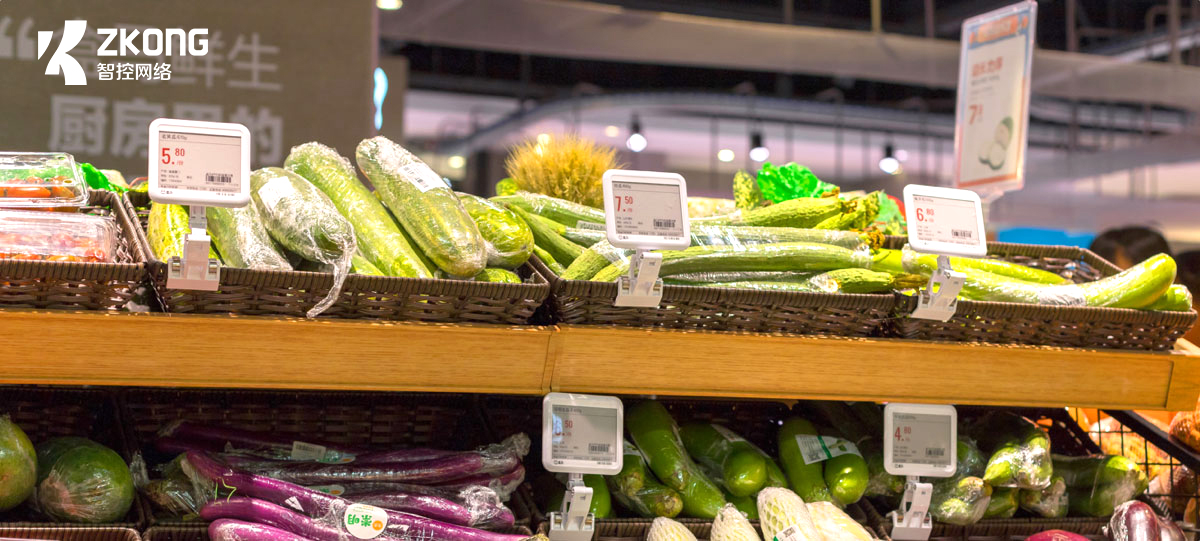
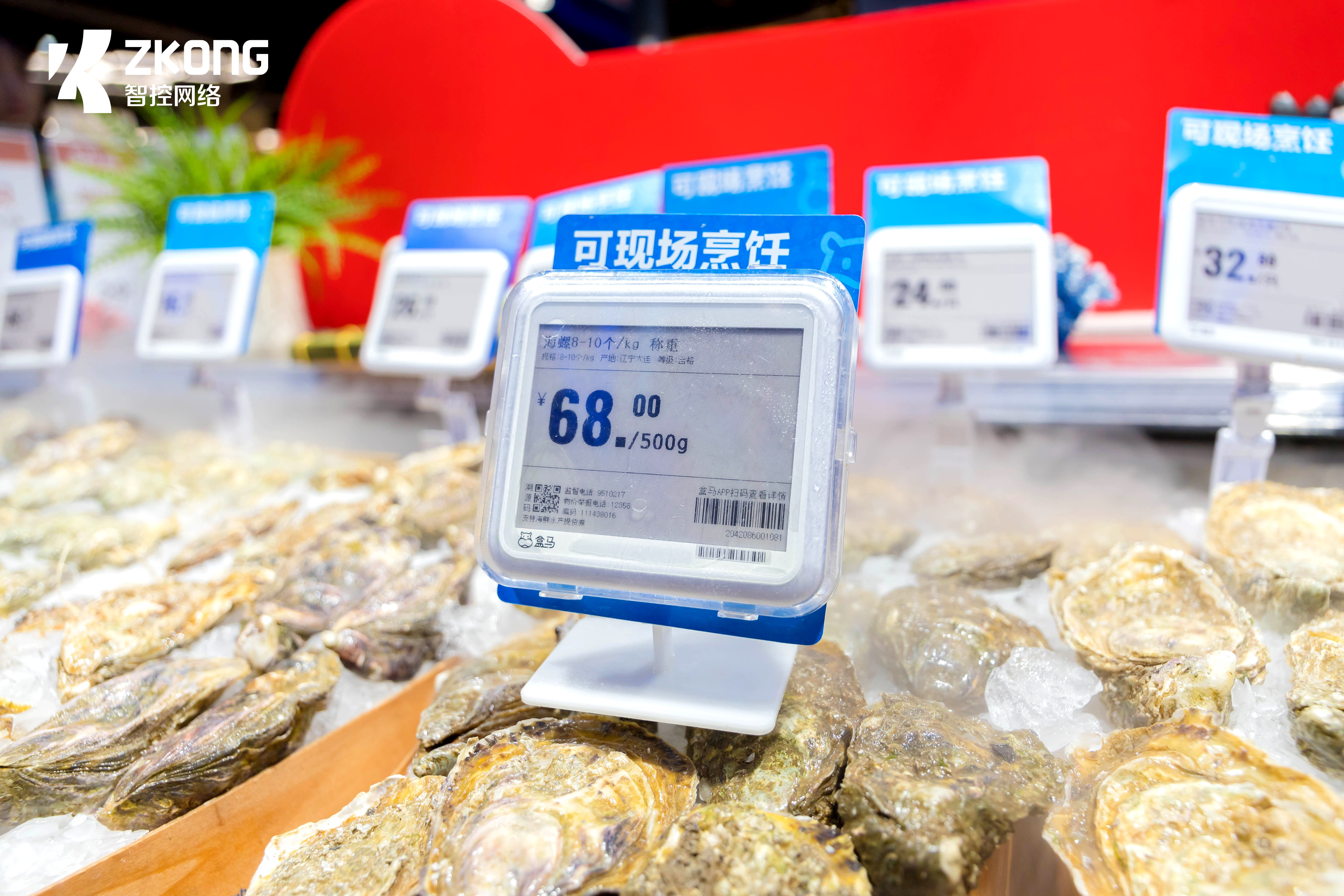
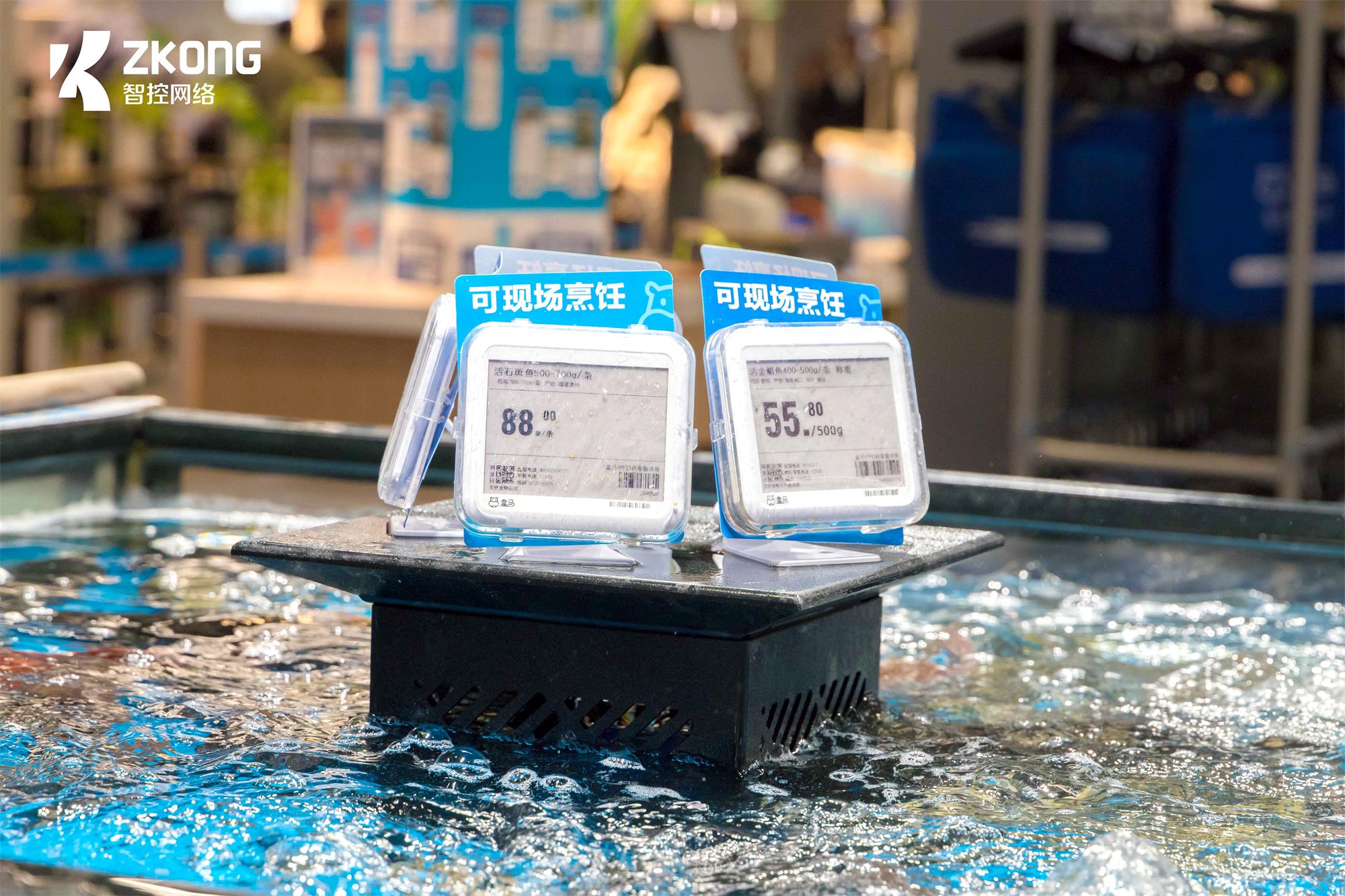
The electronic shelf label system consists of electronic shelf label terminals, base stations (gateways), and cloud management systems, and is mainly applied to shelf-type product sales venues such as supermarkets, convenience stores, tobacco and liquor stores, 3C digital, fresh fruit stores, and pharmacies, which often need to adjust and change product prices and manage national chain price adjustments. In addition, the system can also achieve automatic inventory changes, consumer interaction, intelligent picking, and other functions, further improving the management and service level of retail store operators, reducing operating costs, and enhancing customer experience.
Automatic Inventory Changes: After the user's own management system and price tag management system are connected, the inventory changes on the electronic price tag screen can be realized through data docking and dynamic fields.
Consumer Interaction: The system uses the embedded NFC function in the hardware to communicate with the customer's system, allowing consumers to approach the electronic price tag with the near-field communication function of their smartphones, or scan the QR code on the cloud price tag and enter the brand's online store to complete offline experience and online ordering. It is more convenient to receive money consultation and assistance. At the same time, it can also achieve functions such as product promotion, marketing activities, and customer feedback collection, enhancing customer interaction and experience.
Intelligent Picking: The system supports intelligent picking functions, which can guide staff to quickly find the corresponding goods in the store through the electronic price tag screen, improving work efficiency and reducing the time spent on picking goods.
Electronic Shelf Label Terminal
The electronic shelf label terminal is powered by a button battery and driven by a main control MCU chip integrated with a certain wireless standard, which drives an e-paper display module to show changes. In order to maximize power control and extend battery life, customized private protocols are adopted to improve communication transmission efficiency. Transmission frequency bands mainly include Bluetooth, 2.4 GHz, 433 MHz, and others.
The full range of ZKONG electronic price tags uses mainstream Bluetooth communication protocols and supports OTA upgrades, enabling continuous optimization of the electronic price tag system and constantly leading the new Bluetooth price tag standard. With the upgrade of Bluetooth versions and related technologies, the number of price tags connected in a single network can be expanded to 32,640, and two-way communication between the gateway and the price tag can also be achieved.
Currently, e-paper display modules for price tags come in various sizes, including 1.54, 2.13, 2.6, 2.7, 2.9, 3.7, 4.2, 7.5, 10.2, 11.6, and 13.3 inches, with 2.13 inches being the largest shipment. Taking a 2.13-inch black, white, and red tri-color electronic price tag from the Valley series by ZKONG as an example, the standard electronic price tag specifications are: e-paper display for product name introduction, price, and promotion information; 256-color LED light for responsive alerts; built-in NFC for quick tag and product pairing; Bluetooth 5.0 communication standard; built-in 2 CR2450 button batteries, refreshing 3-5 words of price daily, with a battery life of over 7 years.
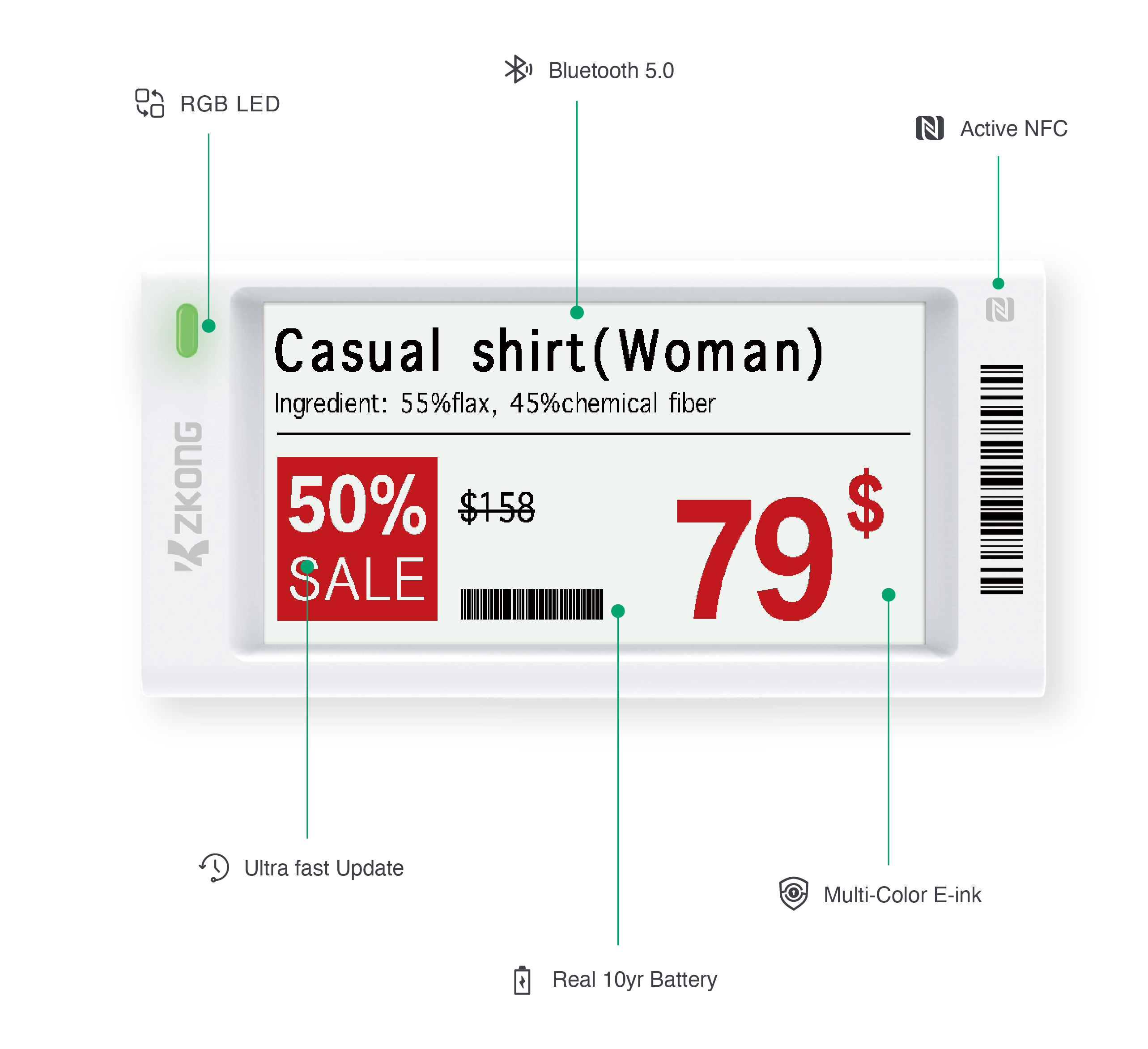
Base Station (Gateway)
The base station, also known as the gateway, is divided into two types. One is a dedicated base station for electronic price tags, and the other is a fusion base station in the form of a base station board or Dongle, which is connected to other devices through a standard interface. Typically, the base station is fixed on the ceiling of a supermarket and covers a radius of 10-30 meters, with the specific range depending on the actual site conditions and the performance of the base station.
Taking an example of a base station from ZKONG, the base station can achieve a maximum coverage radius of 60 meters through its built-in power amplifier and supports five antennas, allowing up to 5,000 electronic price tags to be connected. The base station is crucial for the coverage and update speed of electronic price tags.
Cloud Management Platform
Electronic price tags and base stations are the hardware of the electronic price tag system, determining the system's performance and battery life. The Cloud Management Platform represents the software of the electronic price tag system, determining the user experience. As retailers' management requirements become more refined, the management software for electronic price tags is also constantly evolving. To meet customers' ever-changing demands, electronic price tag system solution providers are continuously improving the platform's functions, providing users with customized solutions.
In the SaaS application layer, the most important indicator is the stable support capability for tens of millions of electronic price tags. After years of customer demand iteration, mainstream cloud platforms include store label management systems, such as data docking, product management, electronic price tag binding, electronic price tag management, and promotion management.
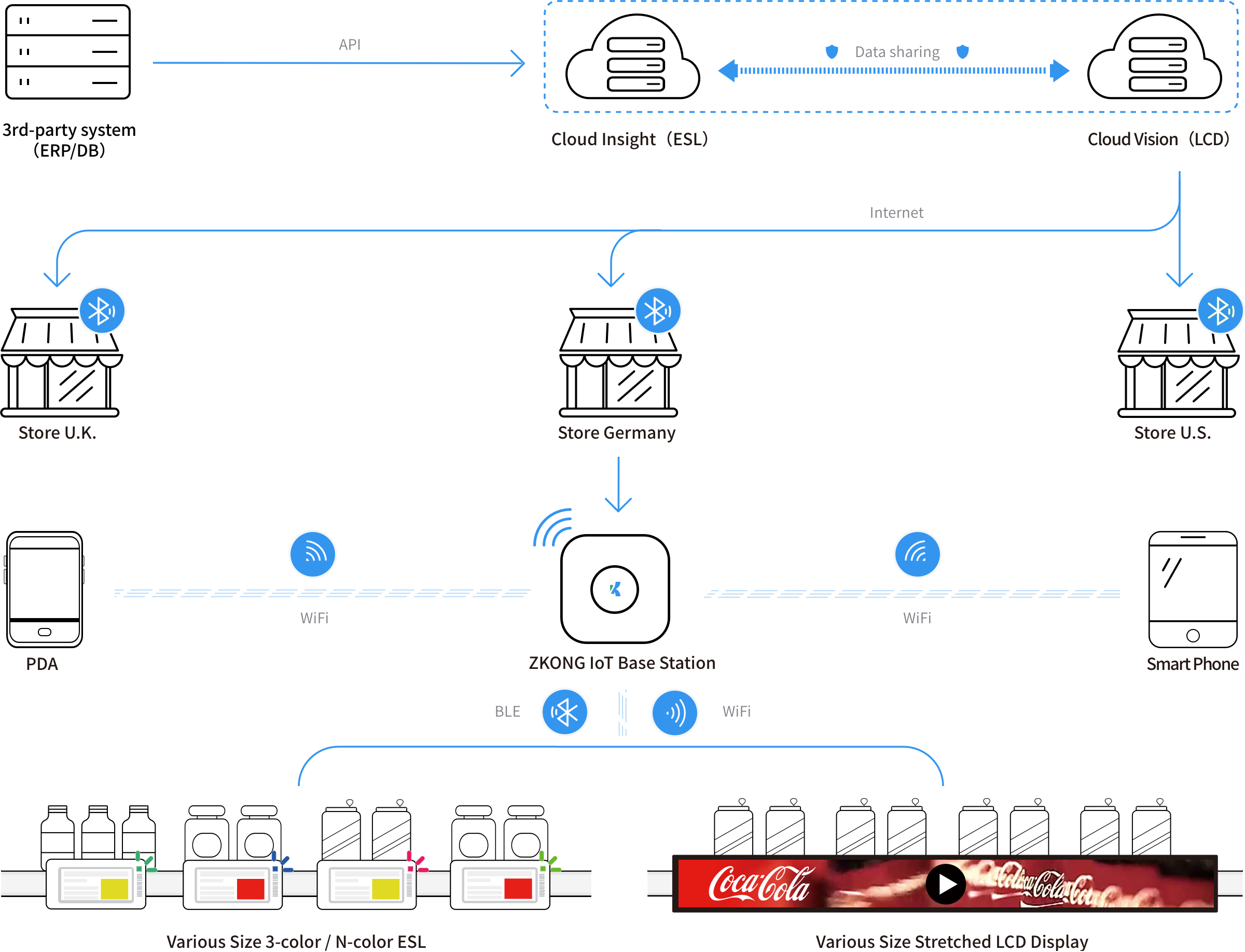
Based on a true cloud architecture, the ZKONG SaaS cloud management platform does not require local installation. A single platform can efficiently manage ZKONG electronic price tags, commercial display screens, and other ZKONG devices in multiple stores. The platform supports various cloud deployment methods to meet users' deployment needs and business strategy implementation at different levels, providing stable, agile, and cost-effective IoT smart retail solutions for various industries.
Electronic Price Tag System Economic Value Analysis
Taking a medium-to-large-sized supermarket with a 5-year service life as an example for calculation. The number of single products is approximately 20,000. The expenditure of the electronic price tag system is shown in Table 1. The comparison of the cost of the electronic price tag system with traditional costs is shown in Table 2. (Data source: ePaper Insight)

Table 1: The Expenditure of the Electronic Shelf Label System

Table 2: The Comparison of the Cost of the Electronic Shelf Label System with Traditional Costs
In addition, according to the regulations of the industrial and commercial laws, disputes arising from price errors in supermarkets are generally considered as price fraud. For supermarkets, the annual losses and compensation amounts caused by manual price modification errors are also considerable, and this part of the cost is not calculated in the above cost comparison. From an economic perspective, although the investment cost of the electronic price tag system is relatively high, an economic value analysis shows that it can recover its one-time investment in about 3 years, making it an inevitable choice for the digital information transformation of traditional supermarkets.
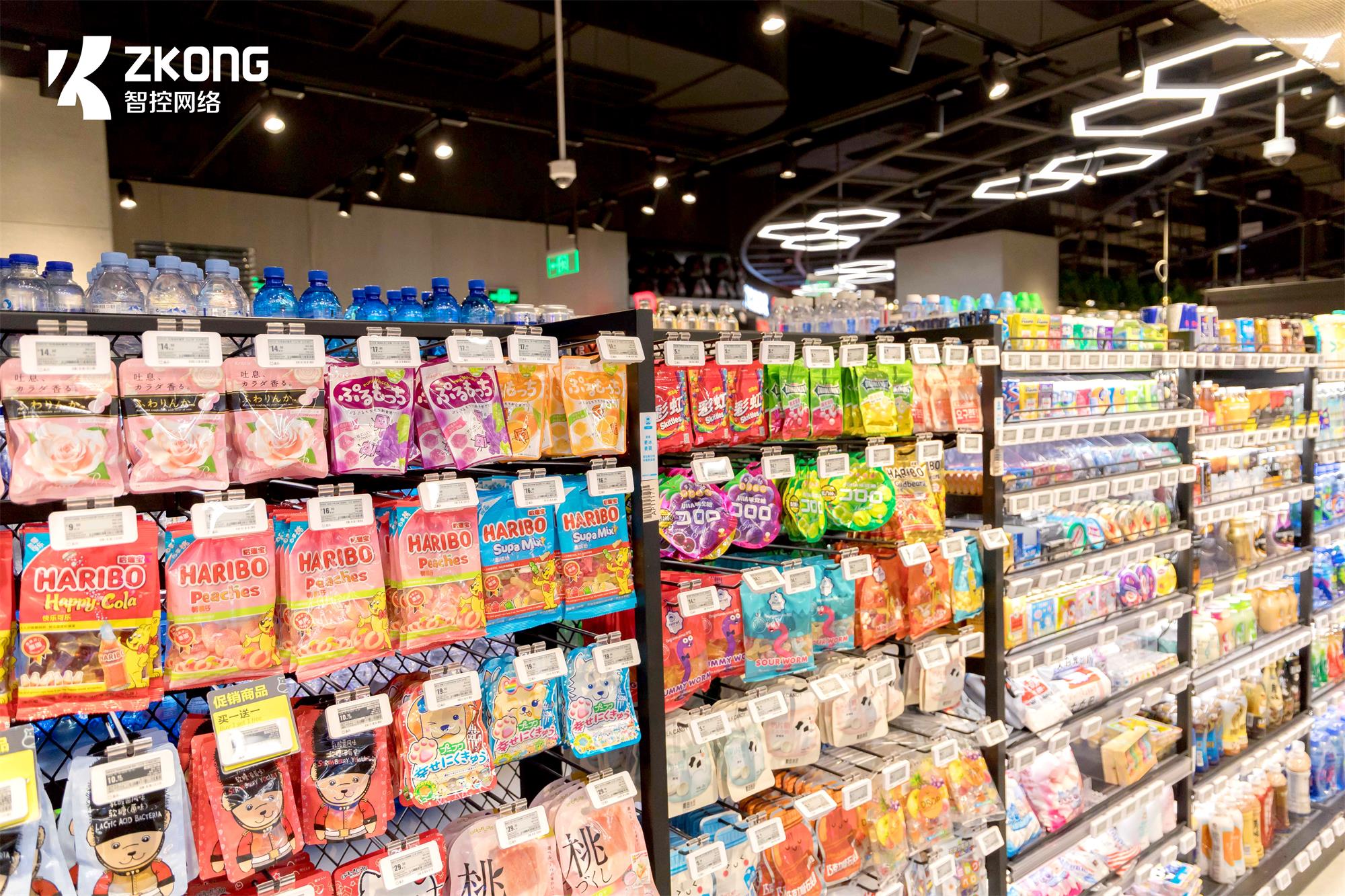
At present, in France, the market penetration of electronic price tags has exceeded 30%, followed by Europe and the United States with more than 10%, and the annual market growth is nearly doubling. In China, we can see that internet-based supermarkets such as FRESHIPPO, Convenient Bee, digital experience stores like Xiaomi and Huawei, fashionable stores like Watsons and China Duty-Free Group, as well as drugstores and cosmetics stores are all adopting new retail electronic shelf label systems on a large scale. In terms of trends, electronic shelf label will replace traditional paper price tags, achieving low-carbon, digital, and recyclable green transformation.









